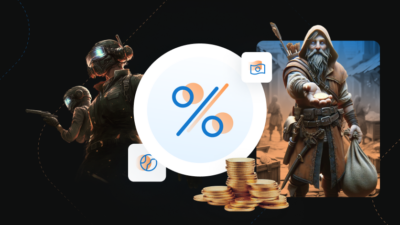Today over 160 countries require some kind of value added tax and 45 U.S. states levy a sales tax. Tax laws are constantly changing and vary as much as the local cuisine. With the U.S. losing over $23 billion dollars a year in revenue due to e-commerce and cross border e-commerce growing at a rate of 25%, we predict the future holds more complexity, tougher fines and additional regulation around taxes.
$704 Million Dollars…
…That is the estimated tax revenue loss in the U.S. attributed to Amazon sales in 2015 alone1. Even though this amount represents a single online behemoth, anyone selling digital content, software or SaaS should sit up and take notice.
Because sales tax is used to fund schools, roads, public safety, etc., the forty-five U.S. states that collect sales tax count are going to get much, much more aggressive about tax collection in the near future2. Connecticut was the latest state to announce it would step up efforts to collect sales tax not being paid by online retailers3.
Location. Location. Location.
Tax is often determined by location of the buyer, seller or both. More states and countries are enacting laws to tax SaaS and digital goods regardless of whether you have a physical presence in those states or countries.
Even when selling software and SaaS products online, you need to be aware of the laws in the localities of each of your customers. To start collecting sales and use tax, businesses need to know the sales tax rates in each state. Some states might require you to renew your sales tax permit periodically, while others do not.
“With over 12,000 taxing jurisdictions throughout the U.S., each empowered to alter rates and rules with little oversight, the complexity for companies trading in the US becomes mind-boggling,” is how Emma Scotton summed it up at Web Retailer4.
Taxing the Cloud
Tech is moving faster than government can keep up and, in some cases, tax laws are still being defined. Take SaaS. As a subset of “cloud computing”, SaaS transactions in the U.S. are treated differently from state to state for sales and use tax purposes.
The problem is described by Bloomberg BNA as, “Unlike traditional sales and use tax transactions, not only is the character of each cloud transaction up for debate (is it tangible personal property? Is it a taxable or non-taxable service?), but so is the taxable location at which cloud transactions occur.” 5
The VAT Myth
Many businesses are turning to international sales to grow their revenue since ninety-five percent of the world’s consumers are outside U.S. borders.6
However, selling into other countries creates its own tax challenges including proper collection and remittance of Consumption Tax, Goods and Services Tax (GST), and the dreaded VAT. The Value Added Tax, or VAT, is a general, broadly based consumption tax assessed on the value added to goods and services.
The big myth regarding VAT is that collection of VAT is only required in the EU countries. Not true! Currently, collection of VAT is required for sales in over 160 countries and, as with sales tax in the U.S. for each individual state, the laws are frequently changing. This interactive map from EY shows details by country.
Some countries go as far as requiring you to have a physical presence or entity in their country if you want to sell there.
The Affiliate Dilemma
Using affiliates is a great way to drive online sales, but beware of the added tax complexities involved. If you are using click-through marketing or affiliate programs, you need to know:
- Which states and countries have laws that can create nexus for you through referrals of affiliates.
- What the minimum sales thresholds are for the click-through nexus states.
- Where your referrals are coming from, so you can see if any click-through nexus laws might apply to those transactions.7
Why Care Now?
Just ask Lularoe. This online seller recently got slapped with a class action lawsuit due to sales tax being charged based on the location of the sales rep rather than the buyers’ locations. The suit was prompted by one person who was overcharged by $35.16, and it snowballed from there.8
Some U.S. states have not been enforcing their online sales tax laws but that is quickly changing as well. Take, for instance, a Colorado which was passed in 2010 law but has been held up in court. The state will finally begin enforcing penalties on this law July 1, 2017. 9 As of April 1st, even Amazon is now collecting tax from almost every state.
We’re going to see a great deal of change in all tax laws in the next few years, in the United States and around the world.
Tax Solutions for Digital Content, SaaS, Subscriptions, and Software
It is critical that you understand what your e-commerce solution does and does not provide in terms of handling for tax, VAT, GST and Consumption Tax. Read the fine print of your contract. Here are some things to look out for:
The Stripe Myth Sure, you’ll get a lower fee but “simple” payment options like Stripe do not handle your sales tax. You’ll need to add staff or work with an accounting firm—and this could easily negate any realized savings. Using a Merchant of Record digital commerce solution like FastSpring means your taxes are handled.
The Unresponsive Big Player Some of the too-big-to-be-agile e-commerce companies handle your tax issues but fall short when it comes to customer service. If you have questions about your sales and taxes, you want answers right away. Make customer service an integral part of your decision process.
Half-baked Solutions It takes time to build a really good e-commerce company. Make sure that your solution covers taxes for the parts of the globe where you want to sell. Some newbie companies claim they “cover VAT” but really only handle the EU taxes.
The Last Word
This article shares information based on our over ten years of experience handling e-commerce tax for thousands of companies selling software, SaaS, subscriptions and other digital content. This is not legal advice so please contact a tax expert if you have specific questions. Or just forgo your tax headaches completely and sell through Fastspring.
Since you’re here, check out the tax infographic!
We’ve got your back on taxes — visit our Knowledge Base for details.
Sources:
- 1. Amazon and Empty Storefronts, a joint study by American Booksellers Association and Civic Economics, http://www.civiceconomics.com/home.html
- https://www.taxjar.com/guides/intro-to-sales-tax/#the-basics-of-sales-tax
- https://www.usnews.com/news/best-states/connecticut/articles/2017-03-28/connecticut-seeks-lost-sales-tax-revenue-from-online-sales
- http://www.webretailer.com/lean-commerce/us-sales-tax-ecommerce/#/
- https://www.bna.com/sales-tax-cloud-n73014450102/
- Economic Report of the President, The White House, Council of Economic Advisers, February 2015.www.whitehouse.gov/sites/default/files/docs/cea_2015_erp.pdf
- https://www.avalara.com/blog/2016/06/30/a-guide-to-click-through-sales-tax-nexus-for-small-businesses/
- https://www.forbes.com/sites/kellyphillipserb/2017/02/27/popular-fashion-line-lularoe-sued-for-overcharging-customers-sales-tax
- https://www.law360.com/articles/895483/colo-amazon-tax-law-gets-active-date-under-settlement
![[Customer Story] Why TestDome Considers FastSpring a Real Partner](https://fastspring.com/wp-content/themes/fastspring-bamboo/images/promotional/2023/FastSpring-TestDome-blog-thumbnail.jpg)








